Keynote Speaker
-
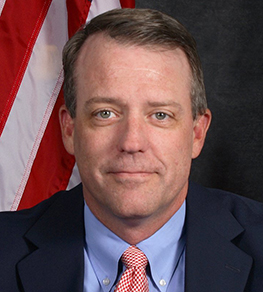
Troy Mueller
Naval Reactor, Nuclear Technology Division
Troy Mueller was born and raised in Denver, Colorado. Upon earning his B.S. Chemical Engineering from the University of Colorado – Boulder in 1988, he joined the Naval Reactors (NR) team. He is also a graduate of the Bettis Reactor Engineering School in Pittsburgh, Pennsylvania (a specialized post-graduate school sponsored by the Navy). In 2018, he earned his MBA from the Jack Welch Management Institute.
Serving as Director, Nuclear Technology Division since 2001, he is NR’s chief regulator and expert for radiation protection, radiological controls, emergency preparedness and planning, and radioactive and mixed wastes. He is also responsible for Environmental, Safety, and Health (ESH) at each of NR’s DOE-owned/ contractor-operated labs, prototypes, and spent-fuel site, all technical aspects of naval reactor plant and steam plant chemistry, and shielding associated with naval reactor plants. For each of these areas, he trains and certifies inspection team leads for field reviews. These in-depth regulatory reviews evaluate and preserve NR’s self-regulatory responsibilities that are unparalleled in their degree of execution and accomplishment government-wide. These responsibilities cover more than 50,000 military and civilian personnel, who design, build, operate, support, and manage the U.S. nuclear-powered naval fleet worldwide, which comprises 97 operational nuclear reactors supporting over 40 percent of the Navy’s major combatants.
He was co-leader of an NR team of executives working with high-ranking officials of the Japanese government to cover the first-time forward deployment and homeporting of a naval nuclear-powered aircraft carrier in a foreign country, helping the Japanese government work through all the political, technical and public affairs issues associated with the 2008 deployment. In March 2011, he immediately responded to support Operation TOMODACHI and associated U.S. efforts to help the Government of Japan respond to the Fukushima Daiichi reactor accidents, eventually as the specially selected technical advisor to the U.S. Ambassador to Japan. He also develops and maintains productive relationships with State and local authorities in the areas of emergency plan¬ning, ESH, and radiological controls wherever naval nuclear-powered warships are homeported or an NR site resides.
He has led four major investigations in fields outside his normal responsibilities and cognizance. In 2008 he spearheaded the Secretary of Defense-directed investigation of the Air Force nuclear weapons enterprise, and followed that investigation with an extensive review of the Navy’s nuclear weapons enterprise. He led a third investigation in 2009 to identify root causes behind a number of Navy submarine collisions and groundings. He is currently assisting in a review of the underlying causes to major fires on U.S. Navy warships.
His accomplishments were formally recognized in 2017 through the Distinguished Executive Presidential Rank Award and in 2007 through the Meritorious Presidential Rank Award; in 2017 he received the Navy Superior Public Service Award for his work with the Japanese government; in 2008 and 2011 he received awards for the investigation of the Air Force nuclear weapons enterprise and for supporting Japan during Operation TOMODACHI, respectively. He is married to the former Carla Bates and has four daughters and two granddaughters.
Villforth Lecturer
-
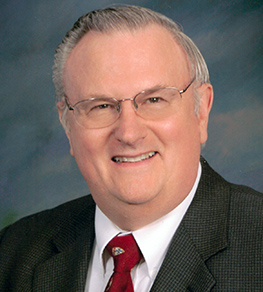
John Boice
Vanderbilt University, National Council on Radiation Protection and Measurements
Dr John Boice is professor of Medicine at Vanderbilt University and Director of Science at the National Council on Radiation Protection and Measurements. He is an international authority on radiation effects and served on the Main Commission of the International Commission on Radiological Protection, the United Nations Scientific Committee on the Effects of Atomic Radiation, and the Veterans' Advisory Board on Dose Reconstruction.
Boice founded the Radiation Epidemiology Branch at the National Cancer Institute (NCI). His seminal discoveries and over 540 publications are used to formulate public health policies to prevent radiation associated diseases. He served 27 years in the US Public Health Service (USPHS), retiring as Captain.
He has a bachelor’s degree in Physics from the University of Texas at El Paso (UTEP); a master’s in Nuclear Engineering from Rensselaer Polytechnic Institute; a master’s in Medical Physics and a doctoral degree in Epidemiology from Harvard.
He received the Harvard School of Public Health Alumni Award of Merit; the EO Lawrence Award from the Department of Energy; the Gorgas Medal from the Association of Military Surgeons of the United States; the outstanding alumnus award from UTEP; the Distinguished Service Medal from the USPHS; and the NCI Director's Award in 2020. The "John D Boice, Jr Young Investigator Award" was established by NCRP in 2019 to recognize early career professionals.
Boice directs the Million Person Study of Workers and Veterans, examining health risks following radiation exposures. He serves on the steering committees of Image Gently and the Childhood Cancer Survivor Study.
Speakers
-
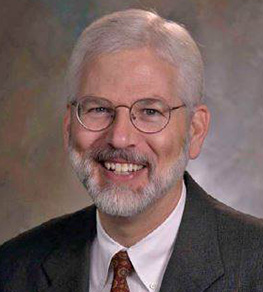
David J. Allard, MS, CHP, FHPS
PA Department of Environment Protection
In February of 1999 Mr. Allard became the Pennsylvania DEP’s Director of the Bureau of Radiation Protection (BRP). He is responsible for the: accelerator, X-ray, environmental surveillance, nuclear safety, radiological emergency response, radioactive materials, decommissioning / site clean-up, low-level radioactive waste and radon programs within the Commonwealth. During his 20+ years with DEP, he has also served as acting Deputy Secretary for Waste, Air, Radiation & Remediation on two occasions. Dave has served in leadership roles in his professional organizations, and serves as a member or advisor on several national and international radiation protection committees. Mr. Allard has been involved in the various aspects of governmental, industrial, reactor, medical, and academic radiation protection for over 40 years. He has authored numerous professional papers and reports, and frequently lectures on a wide variety of radiation protection topics and concerns.
-
George Allen
MQSA
George Allen began his involvement with MQSA in October 1994. Since that time he has become a MQSA auditor and Radiological Health Representative. George has serves as a Subject Matter Expert (SME) for MQSA and has provided training for the MQSA Course III for 15 years.
-
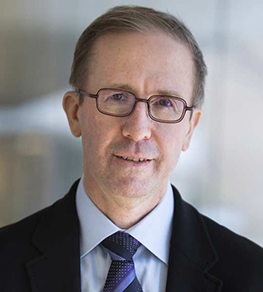
Todd Allen
University of Michigan
Dr. Todd Allen is Professor at the University of Michigan and a Senior Fellow at Third Way, a DC base Think Tank, supporting their Clean Energy Portfolio. He was the Deputy Director for Science and Technology at the Idaho National Laboratory from January 2013 through January 2016. Prior to INL he was a Professor in the Engineering Physics Department at the University of Wisconsin, a position held from September 2003 through December 2012 and again from January 2016-December 2018. From March 2008-December 2012, he was concurrently the Scientific Director of the Advanced Test Reactor National Scientific User Facility at INL. Prior to joining the University of Wisconsin, he was a Nuclear Engineer at Argonne National Laboratory-West in Idaho Falls. His Doctoral Degree is in Nuclear Engineering from the University of Michigan (1997) and his Bachelor’s Degree in Nuclear Engineering is from Northwestern University (1984). Prior to graduate work, he was an officer in the United States Navy Nuclear Power Program.
-
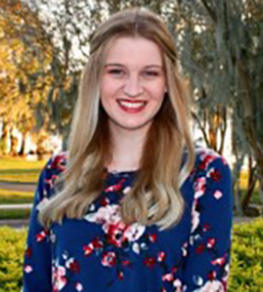
Christine Allston
Chainbridge Technologies
Christine Allston has worked as a Senior Program Analyst for the CBRNResponder Network at Chainbridge Technologies since 2018. She is currently responsible for RadResponder's outreach and training, UX design, the Train the Trainer program, leading the special feature webinar series, and running CBRNResponder's communications plan. Christine graduated from Florida State University with a B.S. in International Affairs.
-
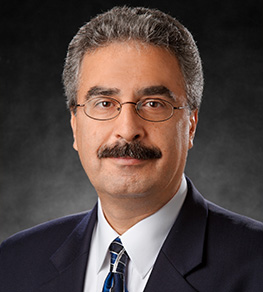
Armin Ansari
Centers for Disease Control and Prevention (CDC)
Armin Ansari is the Radiological Assessment Team Lead at the Centers for Disease Control and Prevention (CDC) serving as subject matter expert in CDC’s radiation emergency preparedness and response activities since 2002. He received both his undergraduate and graduate degrees in radiation biophysics from the University of Kansas, starting his career as a radiation biologist, and did his postdoctoral research in radiation-induced mutagenesis at Oak Ridge and Los Alamos National Laboratories. Prior to joining the CDC in October 2002, he was a project leader with the Environmental Survey and Site Assessment Program at ORISE and a senior scientist with a radiological consulting firm where his work related to radiological site characterization, evaluation of radiation exposure pathways, radiation dose assessments, remedial action activities, and regulatory compliance. He is a fellow and past president of the Health Physics Society and an adjunct associate professor of nuclear and radiological engineering at Georgia Institute of Technology. He serves on the National Council on Radiation Protection and Measurements (NCRP), provides consultancy to the International Atomic Energy Agency (IAEA) and serves as member of the United States delegation to the United Nations Scientific Committee on the Effects of Atomic Radiation (UNSCEAR).
-
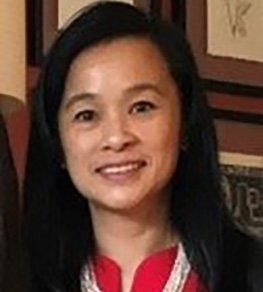
Peggy Bagnoli
U.S. Environmental Protection Agency
Peggy Bagnoli is the lead on National Radon Action Plan for the EPA’s Indoor Environments Division at headquarters in Washington, DC. She is also works with the Homes Team on Indoor airPLUS Program and manages the websites for both the Radon and Homes Teams. She also helps Michele Monti, from CDC, with the Radon Data Collection effort at CDC’s Environmental Public Health Tracking Network.
Prior to the Radon and Home’s Program, Peggy worked in EPA’s Toxics Release Inventory Program, Colleges and University’s Sectors Program, EPA New England’s Pollution Prevention Program and the Air Force. Peggy is a dedicated Civil Servant with 30 years of experience – 23 with EPA and 7 with the Air Force. Peggy graduated from Pennsylvania State University where she received a BS in Civil Engineering and completed the Palace Acquire Internship with the Air Force as an Environmental Engineer.
-
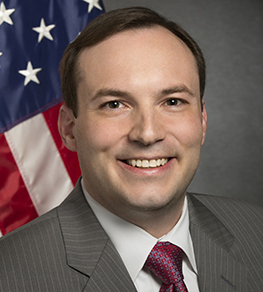
Jeff Baran
Commissioner
The Honorable Jeff Baran was nominated by President Obama and sworn in as a Commissioner on Oct. 14, 2014. He is currently serving a term ending on June 30, 2023.
During his tenure on the Commission, Commissioner Baran's priorities have included maintaining a strong focus on safety and security, improving oversight of power reactors entering decommissioning, boosting the openness and transparency of agency decision-making, promoting diversity and inclusion at the agency, and preparing to review and oversee the safety of new technologies. In fact, he will be moderating the Artificial Intelligence technical session during the RIC. Commissioner Baran has visited dozens of NRC-licensed facilities. He also traveled to Fukushima Daiichi for a first-hand look at conditions and activities at the site.
Before serving on the Commission, Commissioner Baran worked for the U.S. House of Representatives for over 11 years. Originally from the Chicago area, Commissioner Baran earned a bachelor’s degree and master’s degree in political science from Ohio University. He holds a law degree from Harvard Law School.
-
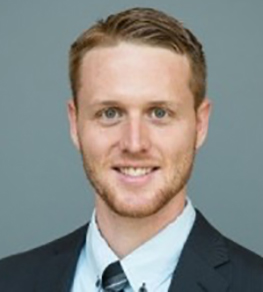
Matthew Barrett
Nuclear Regulatory Commission
Matthew Barrett started his career serving as a reactor operator on a Los Angeles class nuclear submarine for six years with the US Navy. He then graduated from Texas A&M University with a B.S. in Radiological Health Engineering. Matthew worked for a year as an engineer for a medical diagnostics company before pursuing a graduate degree. He completed an M.S. in Business Analytics at the University of Texas and shifted to consulting work for R&D companies.
Matthew transitioned to the Nuclear Regulatory Commission (NRC) as a Health Physicist in 2020; joining the Source Management and Protection Branch (SMPB), in the Division of Materials Safety, Security, State and Tribal Programs, within the Office of Nuclear Material Safety and Safeguards. In his first year with the SMPB team, he has had the opportunity to work with source security via the Global Nuclear Detection Architecture (GNDA) as well as becoming increasingly involved with source management through the NRC’s Integrated Source Management Portfolio (ISMP) and its component subsystems: National Source Tracking System (NSTS), License Verification System (LVS) and the Web-Based Licensing System (WBL). Recently, Matthew has specifically been involved with WBL modernization efforts including the management of submitted change requests, training material updates, and development of data visualization interfaces.
-
Bette Blankenship MS, DABR, FAAPM
Hartford HealthCare
Current national society volunteer activities include several committees and task-groups for the American Association of Physics in Medicine (AAPM): Ad Hoc Committee to Develop Conflict-of-Interest Review and Management Policies and Procedures, Chair, Administrative Council, Vice Chair, Board of Directors, ex officio, Rules Committee, Vice Chair, Conference of Radiation Control Program Directors Subcommittee, Consultant, Ethics Committee, International Council, Radiopharmaceutical Therapy Subcommittee,TG288 - Consensus Recommendations - for Incident Narrative Formatting Task Group, Connecticut AAPM Chapter (CAMPs) Chapter Secretary
In addition to the AAPM, membership in additional societies includes: The American College of Radiology (ACR), The Health Physics Society (HPS) National Chapter, Sigma Xi, Scientific Research Society National Chapter and Southern California Chapter, Conference of Radiation Control Program Directors.
When not volunteering, hobbies include enjoying my kids, hiking, rafting, playing the piano, and cooking.
-
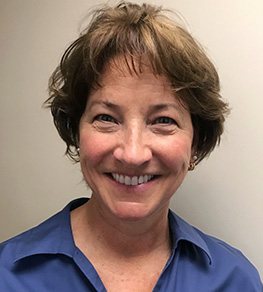
Denise Bleiler
Pennsylvania Department of Environmental Protection
Denise is the Radiation Protection Program Supervisor of the Radon Monitoring Section within the Bureau of Radiation Protection of the Pennsylvania Department of Environmental Protection. Denise joined the Radon Division as a Radiation Health Physicist June 2011 and has been the Monitoring Program Supervisor since January 2012. Denise has been a member of CRCPD’s E-25 committee since October 2018.
Prior to beginning employment with the Bureau of Radiation Protection she had worked full time as a Nuclear Medicine Technologist since 1985. Her B.S. degree is in Biology from Millersville University 1985. She continues to hold Certification in Nuclear Medicine Technology. Denise enjoys spending time with her family and is looking forward to becoming a grandma!
-
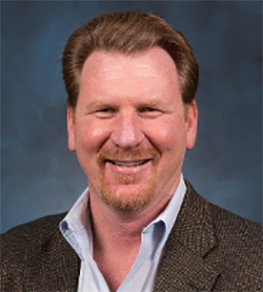
Brooke Robert Buddemeier
Lawrence Livermore National Laboratory
Brooke Buddemeier is a certified health physicist in the Global Security Directorate of Lawrence Livermore National Laboratory (LLNL), providing technical leadership for multi-organizational efforts to deliver sound supporting science for nuclear terrorism risk assessments and community prevention and response planning. He facilitates nuclear and radiological response preparedness activities through advanced modeling and close coordination with state and local response organizations.
Brooke is a council member of the National Council on Radiation Protection and Measurements (NCRP) and served on the scientific committees which developed Commentary No. 19 - Key Elements of Preparing Emergency Responders for Nuclear and Radiological Terrorism (2005), NCRP Report No. 165 – Responding to a Radiological or Nuclear Terrorism Incident: A Guide for Decision Makers (2010), Report No. 175 - Decision Making for Late-Phase Recovery from Major Nuclear or Radiological Incidents (2014), and Report No. 179 – Guidance for Emergency Response Dosimetry.
From 2003 through 2007, Brooke was on assignment with the Department of Homeland Security’s Science and Technology Directorate providing scientific solutions to improve emergency response through better capabilities, protocols, and standards.
Prior to that, he coordinated LLNL’s involvement in the National Nuclear Security Administration’s Radiological Assistance Program for California, Nevada, and Hawaii. RAP is a national emergency response resource that assists federal, state and local authorities in the event of a radiological incident.
He is Certified Health Physicist who received his Master’s in Radiological Health Physics from San Jose State University and his B.S. in Nuclear Engineering from the University of California, Santa Barbara.
-
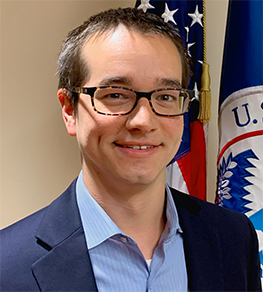
Eliot Calhoun
National Urban Security Technology Laboratory (NUSTL)
Eliot Calhoun is a Program Analyst in the Radiological/Nuclear Response & Recovery (RNRR) Research & Development Portfolio at the National Urban Security Technology Laboratory (NUSTL), a government-owned and government-operated laboratory of the US Department of Homeland Security’s Science & Technology Directorate.
The RNRR R&D Portfolio develops tools and solutions designed to increase the capability of state and local jurisdictions to manage the complexity of radiological and nuclear emergencies. Many of these products specifically focus on enabling responders to more effectively conduct life safety, environmental mitigation, and incident coordination during the early minutes and hours of an incident, when the bulk of Federal resources are not immediately available.
-
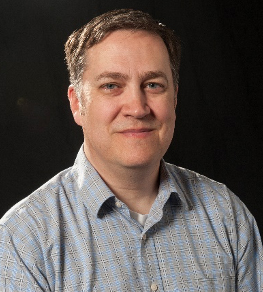
Philip Campbell, CHP, MHP, RRPT
University of Washington
Philip is a Certified Health Physicist who has been the Radiation Safety Officer at the University of Washington (UW) since 2013. He manages a radioactive materials license with a broad range of radioactive material use including: medical, academic, and research use of radioactive material; production of radioactive material in three particle accelerators; and the use of multiple devices with high activity sealed sources. His office also oversees safety programs for radiation producing machines, sources of non-ionizing radiation, lasers, and large magnetic sources. He began his career as a mechanic and radiation safety technician onboard nuclear powered submarines while serving eight and half years in the United States Navy.
-
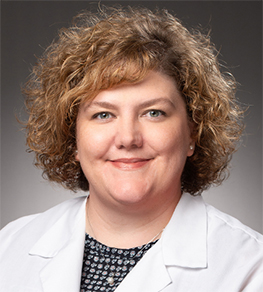
Jessica Clements
Kaiser Permanente
Ms. Clements is the Chief Medical Physicist and Regional Radiation Safety Officer for the Southern California Region of Kaiser Permanente in the Southern California Permanente Medical Group and Program Director for the Diagnostic and Nuclear Medicine Medical Physics Residency. Ms. Clements works with a large group of medical physicists and residents as well as colleagues in the Medical Imaging Technology and Informatics department. Together, they support a system where care is provided for more than 4.8 Million members at 15 hospitals and hundreds of medical office buildings. She is active in several professional organizations including the CRCPD, AAPM, ACR, and the ABR. She currently serves as chair of the AAPM Radiological Protection Committee, chair of the ABR diagnostic oral exam committee, and chair of AAPM Task Group 313 Nuclear Medicine Shielding Requirements. Throughout her career, she has made several radiation safety presentations and contributed to multiple medical physics practice guidelines and publications. She is certified by the ABR in diagnostic and nuclear medical physics and has been recognized as a fellow by the AAPM.
-
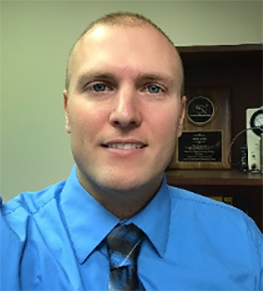
David Crowley
OAS Chair, North Carolina
David Crowley has been a program manager in the agreement states for the past eight years; starting in Georgia and then moving to North Carolina. He is involved heavily on state matters and hopes to support the growth and development of the National Materials Program. Currently, David serves as the OAS Chair and has served previously as the OAS Director of Emerging Issues and Advocacy.
David’s experience with radiation began while earning his B.S. in Physics from Case Western Reserve University. One summer as an undergraduate, he assisted researchers at the Indiana University Cyclotron Facility and became impassioned to the health safety and therapeutic aspects of radiation. After college, the U.S. Navy selected David to become a nuclear officer where he supported their nuclear training command. Following active duty, he merged his nuclear engineering knowledge with medical applications to acquire a M.S. in Medical Physics from the Georgia Institute of Technology.
-
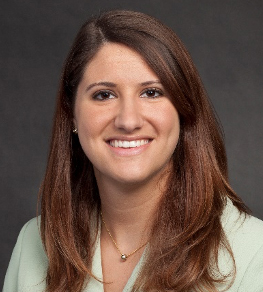
Gina Davis
U.S. Nuclear Regulatory Commission
Gina Davis graduated from Virginia Tech with a B.S. in Materials Science and Engineering. Gina joined the NRC in 2013 as part of the Nuclear Safety Professional Development Program. She began her NRC career in the Division of Spent Fuel Management in the Office of Nuclear Material Safety and Safeguards (NMSS), as a Materials Engineer.
In 2016, she joined the Source Management and Protection Branch, in the Division of Materials Safety, Security, State and Tribal Programs, in NMSS as a Project Manager. Gina currently works with the NRC’s Integrated Source Management Portfolio (ISMP) which is comprised of three online radioactive source tracking systems: National Source Tracking System (NSTS), License Verification System (LVS) and the Web-Based Licensing System (WBL). Gina primarily works with WBL. Specifically, she works with the onboarding of Agreement States to WBL, and the transitioning of their data to the system. She oversees the process from start to finish, frequently coordinating with IT contractors, Agreement State staff, and NRC staff.
-
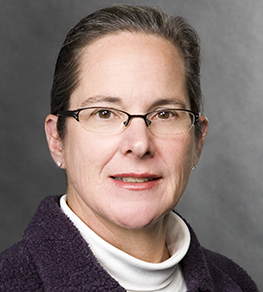
Lisa Dimmick
U.S. Nuclear Regulatory Commission
Lisa Dimmick is the Team Leader for the Medical Radiation Safety Team at the U.S. Nuclear Regulatory Commission. Previously she was a Senior Health Physicist in the Agreement State Program Branch coordinating the Integrated Materials Performance Evaluation Program. Lisa received undergraduate degrees in Biology and Nuclear Medicine Technology from Old Dominion University in Norfolk, VA, and graduate degrees in Health Physics from Georgetown University in Washington, D.C., and in Business Administration from The Johns Hopkins University in Baltimore, MD. Before joining the NRC, Lisa was the regulatory affairs manager and radiation safety officer for an international medical device company, and a health physics consultant.
-
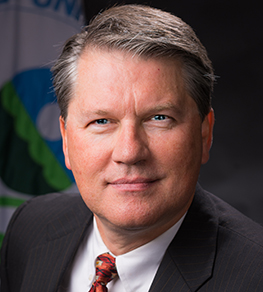
Jonathan Edwards
U.S. Environmental Protection Agency
Jonathan Edwards became Director of the US Environmental Protection Agency’s Office of Radiation and Indoor Air (ORIA) in August 2016. Prior to that he served as Director of the Radiation Protection Division in ORIA, beginning in December 2008. As Division Director, Jon was responsible for several programs including EPA’s radiological emergency response program, environmental oversight of the US Department of Energy’s deep geological repository known as the Waste Isolation Pilot Plant near Carlsbad, NM, scientific and technical radiation risk assessments, and other radiation protection activities and programs.
Mr. Edwards graduated from the US Naval Academy in Annapolis, MD, in 1985, completed two years of post-graduate nuclear engineering instruction and training, and served on the fast attack submarine USS SPADEFISH (SSN-668) as Main Propulsion Assistant and Assistant Engineer.
Upon leaving the Navy in 1993, Jon began work with the EPA as a health physicist in the radiation program, going on to work with the Office of Science Policy in the EPA Office of Research and Development. In early 2003, at about the time of the creation of the US Department of Homeland Security, Jon served in the Administrator’s Office (AO) working on homeland security issues. Jon served with the AO until his assignment as Director, Radiation Protection Division.
-
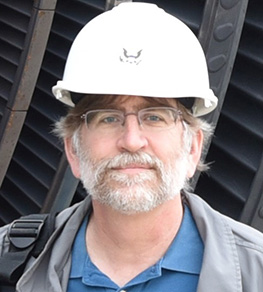
Clark Eldredge
Florida Department of Health
Clark Eldredge is the administrator for the Florida Department of Health, Bureau of Radiation Control, Radiation Machine Section. He has held that position since the fall of 2016. Prior to that he was the Administrator of the Florida Department of Health Radon and Indoor Air Program for 10 years.
-
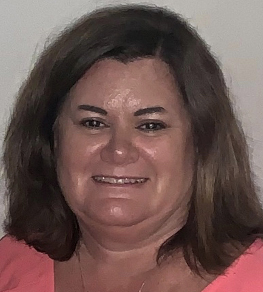
Jennifer Elee
Louisiana Department of Environmental Quality
Jennifer is an Environmental Scientist with the Louisiana Department of Environmental Quality. Jennifer conducts RAM, MQSA and x-ray inspections and provides support for Radiological Emergency response. Jennifer has been a CRCPD member for over twenty years. She currently chairs the Committee on Medical Events and the Committee on Standards, Guidance and Outreach as well as serving as the CRCPD liaison to the American Association of Physicist in Medicine.
-
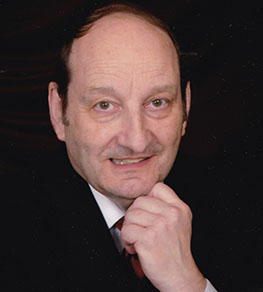
Ken Evans
Illinois Emergency Management Agency
Ken Evans has over 40 years in Emergency Planning and is currently the Supervisor of Radiological Emergency Assessment Center (REAC) in the Illinois Emergency Management Agency. Ken has been involved with the CRCPD HS/ER-5 Committee on Emergency Response Planning since 2009 and became chair of the committee in 2013. Prior to joining Illinois Emergency Management Agency in 2002 Ken was employed by the Clinton Power Station for 18 years, and with the Arkansas Department of Health’ s radiation control program.
-
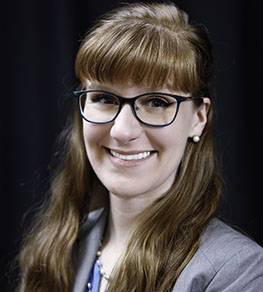
Lauren Finklea
Centers for Disease Control and Prevention
Lauren Finklea is an Associate Service Fellow for the Radiation Studies Section at the Centers for Disease Control and Prevention. Ms. Finklea serves as a subject matter expert for emergency preparedness and response activities as well as computational modeling for radiation protection. She is the lead developer and creator of CRC SimPLER. Ms. Finklea is currently the president of the Atlanta Chapter of the Health Physics Society. Prior to joining CDC, she worked at Oak Ridge National Laboratory performing Monte Carlo simulations for environmental contamination. She received her B.S. and M.S. degrees in Nuclear and Radiological Engineering from Georgia Institute of Technology in Atlanta, Georgia. Currently she is pursuing her Doctorate in Public Health.
-
Monica Ford
U.S. Nuclear Regulatory Commission
Monica Ford is a Regional State Agreements Officer in the U.S. NRC’s Region I Office. Ms. Ford joined the NRC in 2006 and prior to joining Region I worked in the NRC’s Office of Federal and State Materials and Environmental Programs and the Office of State and Tribal Programs. Prior to joining the NRC Ms. Ford worked as a certified nuclear medicine technologist for approximately ten years. Ms. Ford holds a Bachelor of Science degree in Nuclear Medicine Technology from Edinboro University and a Master of Science degree in Health Physics from Georgetown University.
-
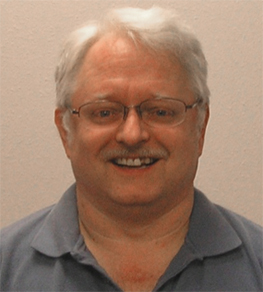
Earl W. Fordham, CHP, PE
Washington (ME)
Earl Fordham is a Certified Health Physicist and a professional engineer in Washington (ME). He has BS degrees from Washington State University (ME, 1995) and the U.S. Naval Academy (Physics, 1980) and worked in the radiation industry since graduation.
Earl joined the CRCPD in the early 1990’s. He was Chair in 2012-13. He is the CRCPD’s Liaison to the Health Physics Society and American Academy of Health Physics. He has served on several working groups including E-5 (Rad Waste).
Earl has worked in operational health physics for 40 years. He is the Deputy Director for Washington’s radiation control program. He develops critical policies having extensive Office impacts. He directs and integrates the work of four groups: environmental sciences, radioactive materials, waste management and radioactive air emissions, state-wide. He assesses radiological events for public impact and dispatches personnel for observations and surveys. He started his career as a submarine officer where he had responsibility for nuclear plant operations and personnel exposure. His civilian career includes the Fast Flux Test Facility and oversight at the Hanford Low-Level Radioactive Waste disposal site and operations at a local rad waste broker.
He is active in the Health Physics Society at the local and national level. He is the Chair of the Columbia Chapter HPS Scholarship Committee and served as the Chapter Secretary twice.
Earl served as the primary author of the State of Washington’s Technical Evaluation Report to receive the PGE Trojan Reactor Vessel as an intact package. He was a contributing HPS author “Fukushima Disaster Response – The States’ Perspective” (2012).
-
Andrew Furgason
The Ocean Corporation
Andrew is a 2010 NDT Alumni of The Ocean Corporation who joined the staff in October of 2019. Andrew first heard of The Ocean Corporation in 2008 and arrived in the summer of 2009 as a student directly out of high school. Upon graduation, Andrew obtained a job quickly and started a career almost immediately in NDT. In his multiple years of field experience, he was exposed to multiple industries such as Power Generation, Aerospace, Pipelines, new construction as well as Petrochemical refining. During his time as a technician he performed NDT all over the country, covering Texas as well as much of the Gulf Coast Region, many of the New England states, and the greater Mid-west Region. His areas of expertise are in VT, MT, PT, UT, PAUT, ET and RT. Andrew has held an active State Certification as a radiographer since 2011 and in August of 2018 he received his first ASNT Level III in Radiographic Testing and Ultrasonic Testing in 2020. During his time as a technician, Andrew also obtained experience as a Radiation Safety Officer, Quality Manager, and experience in the overall business of NDT companies and their operations in the real world. Andrew takes great pride in being able to effectively convey training materials as well as real world applications of what the students are learning at The Ocean Corporation every day.
-
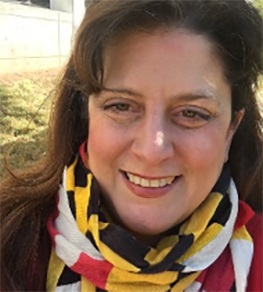
Adelaide Giantelli
U.S Nuclear Regulatory Commission
Adelaide Giantelli graduated from Manhattan College in New York City with a B.E. and M.E. in Mechanical Engineering. Adelaide joined the U.S Nuclear Regulatory Commission (NRC) in December 1999. Prior to joining NRC, Adelaide started her career as an engineer at an environmental services consulting company and later spent several years as an engineer/project manager at a company that designed and manufactured spent fuel storage casks and transportation packages.
Currently, Adelaide works in the Division of Materials Safety, Security, State and Tribal Programs, within the Office of Nuclear Material Safety and Safeguards (NMSS), as a Senior Project Manager. Adelaide works with a team of colleagues on NRC’s Integrated Source Management Portfolio (ISMP) which is comprised of three online systems: National Source Tracking System (NSTS), License Verification System (LVS) and the Web-Based Licensing System (WBL). Previously, she served as Chief of the Source Management and Protection Branch in NMSS and as Team Leader for Transportation Security in NRC’s Office of Nuclear Security and Incident Response. Adelaide started her career at NRC as an engineer working on shielding and containment reviews for transportation packages and spent fuel storage cask designs in NMSS.
-
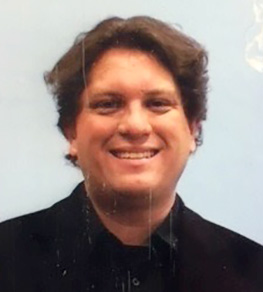
Greg Gothard
Midwest Radioactive Materials Transportation Committee (MRMTC)
Greg Gothard has 13 years of experience as a Subject Matter Expert in Radiological Emergency Preparedness. Greg began his career with the State of Louisiana in 2008 as part of the LDEQ Radiological Emergency Preparedness and Response program. Since then he has attended the Southern States Energy Board (SSEB) meetings for Louisiana and conducted numerous REP drills and exercises, MERRTT trainings, WIPPTREX, served as State Planning Lead, and Louisiana TRANSCOM Super User. Greg came to Michigan in October 2012 where he received the Governor’s appointment to the CSG Midwest Radioactive Materials Transportation Committee (MRMTC) for the State of Michigan. Greg was co-chair of the committee from 2018-2019 and has represented the committee on the NWPA Section 180.c Ad-Hoc Working Group and the TEPP Training Group.
Mr. Gothard holds a Master’s of Science in Applied Physics and received his B.S. in Physics from the University of New Orleans. Greg has recently spoken at the 2017 NTSF on the What to Expect When You’re Expecting a SNF Shipment, 2016 National REP Conference in Charleston, SC, and Michigan Tribal Environmental Group conferences.
-
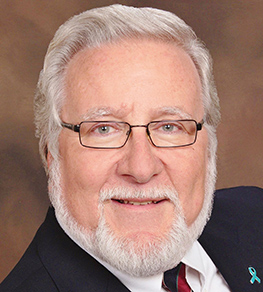
Joel E. Gray, Ph.D.
DIQUAD, LLC
Dr. Gray is founder and President of DIQUAD, LLC, a firm evaluating dental image quality and dose via the mail, under contract to governmental radiation protection agencies (over 45,000 evaluations to date). In addition to positions at Landauer (personal dosimetry) and Lorad (first digital mammography equipment), he was the first clinical medical physicist at Mayo Clinic and served there for twenty years. He is an Emeritus Professor of the Mayo Clinic College of Medicine. Dr. Gray has served on many national and international advisory committees, including the IAEA and WHO, and is a Distinguished Emeritus Member of and consultant to the National Council on Radiation Protection and Measurements (NCRP). Dr. Gray is a Fellow of the American College of Medical Physics and the American Association of Physicists in Medicine (AAPM) and was awarded the Edith Quimby Lifetime Achievement Award from the AAPM. He has published over 170 publications in refereed journals and is the author of the first books and publications on quality control in medical imaging. Dr. Gray received his Doctoral degree from the University of Toronto under Dr. Harold E. Johns. His primary areas of interest include image quality in medical and dental imaging, and optimization of image quality and radiation dose.
-

Paul Gray
Oak Ridge National Laboratories
Paul worked for Nordion Inc. in Canada for more than 30 years, retiring at the end of 2016 from the position of Vice President, Global Logistics and External Relationships. Over his career at Nordion, Paul held a number of management positions including Safety, Environment and Regulatory Affairs; Facilities; Package and Facility Engineering; Enterprise Risk Management; Cobalt Operations; and finally, Global Logistics and External Relationships. In the final 8 years of his career, Paul was also Chairman of the International Source Suppliers and Producers Association (ISSPA); the Gamma Industry Processing Alliance (GIPA); worked extensively with the IAEA in a wide range of subject areas; as well as working in a joint US / Canadian Chamber of Commerce cross border transport Working Group.
Since retirement, Paul has worked with a number of clients and is now working with Oak Ridge National Laboratories on the Transport Security Unified Stakeholders Group (TSUSG) and other radioactive source projects.
-
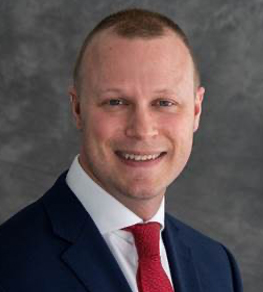
Dustin A. Gress
American College of Radiology
Dustin Gress earned bachelor’s and master’s degrees in Nuclear Engineering and Radiological Sciences at the University of Michigan. Gress then worked as a diagnostic medical physicist for over seven years at Upstate Medical Physics, where he also served as Associate Director of the first CAMPEP-accredited private practice residency program in imaging physics. Gress then spent six-and-a-half years in the Department of Imaging Physics at MD Anderson Cancer Center, supporting clinics providing patient services in nuclear medicine, PET, interventional radiology, mammography, and CT. Gress also served as a Clinical Coordinator in MD Anderson’s Residency Program in Imaging Physics, and as an Instructor in its Graduate School of Biomedical Sciences’ Medical Physics Program. Since May of 2018 he has been Senior Advisor for Medical Physics at the American College of Radiology, providing internal medical physics expertise across ACR departments and projects, including government relations, public relations, registries, accreditation, guidance, among others. Gress is board certified in Diagnostic Radiologic Physics by the American Board of Radiology, and in Nuclear Medicine Physics and Instrumentation by the American Board of Science in Nuclear Medicine.
-
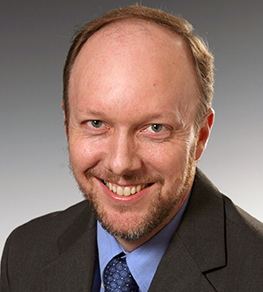
Per Halvorsen, MS, FACR, FAAPM
Beth Israel Lahey Health
Mr. Halvorsen is the Chief Physicist in Radiation Oncology for the Lahey division of Beth Israel Lahey Health in suburban Boston. He received his MS in Radiological Medical Physics from the University of Kentucky in 1990 and was certified by the American Board of Radiology in 1995.
He has been a member of the AAPM for 30 years and has been an active volunteer in professional societies, chairing the AAPM Professional Council and serving on the Board of Directors. During his tenure on the Professional Council, he initiated the Medical Physics Practice Guideline program. He has authored numerous peer-reviewed manuscripts, most recently as the chair of the Medical Physics Practice Guideline for SRS and SBRT and as a member of the ASTRO-ASCO-AUA Evidence-Based Guideline for Hypofractionated Prostate treatment. He is a volunteer surveyor for the American College of Radiology, and served many years on its accreditation program oversight committee. He currently serves as the Chair of the AAPM Working Group on Implementation of TG-100. He is Deputy Editor‐in‐Chief of the open-access journal JACMP, and an honorary fellow of the ACR and AAPM.
-
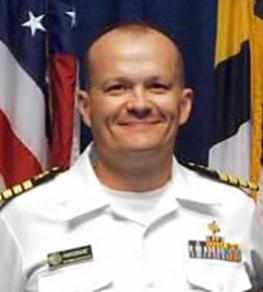
Scotty Hargrave, MPS, RS
US Public Health Service
Captain Scotty Hargrave is assigned to the US Food and Drug Administration’s Southwest Region where he serves as the Regional Radiological Health Representative and Director of Radiation Programs Branch. As the RRHR, CAPT Hargrave works with state and federal partners in the enforcement of the Food Drug Cosmetic Act and the Mammography Quality Standards Act (MQSA). He is a Certified MQSA Inspector and Auditor. He has been certified since January 1995.He is a member of the MQSA inspection training cadre. He serves as an evaluator for FEMA’s Radiological Preparedness Program. Also, CAPT Hargrave serves as a member of the Advisory Team for Environment, Food, and Health under the National Response Framework’s Nuclear/Radiological Incident Annex. CAPT Hargrave is a graduate of The University of Oklahoma. He has a Bachelor’s Degree in Zoology and Masters in Prevention Science. He began his public health career as an Environmental Specialist for the Oklahoma State Department of Health. He has been a Registered Professional Environmental Specialist since 1993.
CAPT Hargrave is a past Chair of the Environmental Health Officer Professional Advisory Committee. He has also served as the Secretary of the American Indian Alaskan Native Commissioned Officers Committee. CAPT Hargrave is the Commander of the Public Health Service’s Applied Public Health Team 5. He has served on deployments for Hurricanes Rita and Ike, the Deepwater Horizon Gulf Spill, and public health missions to Pikeville, Kentucky and Rosebud, South Dakota. Most recently, CAPT Hargrave was deployed for two months in support of the COVID-19 Pandemic testing.
-
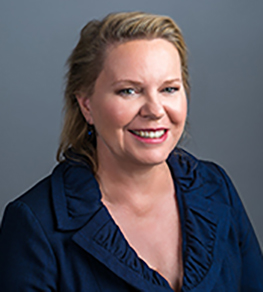
Kathleen M. Hintenlang, Ph.D.
The Ohio State University
Kathleen M. Hintenlang, Ph.D. earned her graduate degrees in Medical Physics from the University of Florida. She's developed a broad base of expertise in the practice of medical physics and is ABR certified and licensed in Therapeutic Medical Physics, Diagnostic Medical Physics and Medical Nuclear Physics. Kathleen was employed at UF in Gainesville, FL for eleven years where she worked in diagnostic radiology, nuclear medicine and radiation protection, and consulted in radiation therapy. She subsequently joined a large private practice radiation oncology group based in Ocala, FL, where she worked as a clinical radiation therapy physicist and RSO for the next twelve years. Kathleen then joined the faculty at Mayo Clinic Jacksonville in Radiation Oncology for three years before she moved to The Ohio State University. Throughout this time Kathleen has been the president of a medical physics consulting company that provided services to a variety of health care facilities. She’s also maintained affiliate faculty appointments in both the College of Medicine and the College of Engineering at UF. Over the course of her career she has been deeply involved with a wide variety of professional activities and has held multiple committee and leadership roles in the AAPM, as well as the ACMP, ABR, ASTRO, CRCPD and her local chapters.
-
Kristin Hirsch
U.S. Department of Energy’s National Nuclear Security Administration’s (DOE/NNSA)
Kristin Hirsch is the Director of the Office of Radiological Security (ORS) within U.S. Department of Energy’s National Nuclear Security Administration’s (DOE/NNSA) Office of Global Material Security, a position she has held since March 2019. ORS works domestically in the United States and internationally over 100 countries to secure radiological sources in use or storage; remove disused sources and disposition them or place them in to secure storage; and to encourage the use of alternative non-isotopic technologies in place of radiological sources to achieve permanent risk reduction. Ms. Hirsch previously spent 3 years as the Director of the U.S. DOE office in Astana, Kazakhstan; as a project manager for the Global Threat Reduction Initiative implementing nuclear and radiological security projects in Europe; and 3 years as an Attaché in the U.S. DOE Office in the US. Embassy in Moscow, Russia. She started her federal career in 1999 working for the Department of Defense. Ms. Hirsch holds a Bachelor's Degree in History and a Master’s Degree in International Affairs.
-
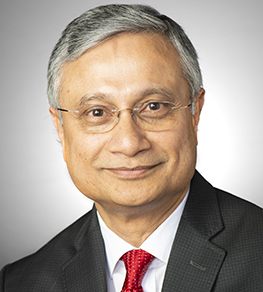
M. Saiful Huq, PhD, FAAPM, FInstP
UPMC Hillman Cancer Center, University of Pittsburgh
M. Saiful Huq, PhD is the Director of Medical Physics at the Department of Radiation Oncology at UPMC Hillman Cancer Center and Professor of Radiation Oncology at the University of Pittsburgh School of Medicine and Professor of Clinical and Translational Science at the University of Pittsburgh, Pennsylvania. Dr. Huq is responsible for the management of scientific activities and clinical medical physics operations of 28 cancer centers in western Pennsylvania. He served as an oral board examiner for the American Board of Radiology (ABR), American Board of Medical Physics and International Medical Physics Certification Board. He is certified by the ABR in Therapeutic Radiological Physics, has given over 205 invited presentations globally and has published 157 manuscripts in peer-reviewed journals.
Dr. Huq received his MS and PhD in Physics from the College of William and Mary in Williamsburg, Virginia.
Dr. Huq is a fellow of the AAPM and British Institute of radiology and a recipient of the AAPM’s Farrington Daniels Award and received the “Distinguished Medical Physicist for 2010” award given by the Indo American Society of Medical Physicists. He served as the President of AAPM in 2020 and currently serves as the chair of the Board of AAPM. He was a member of numerous AAPM Task Groups, notably TG100 (chair) and TG-51. He has also served as a consultant and an expert on many International Atomic Energy Agency (IAEA) initiatives, developing various documents (authors of IAEA TRS398 and TRS 483 CoP) which provide guidance to the worldwide radiotherapy community.
-
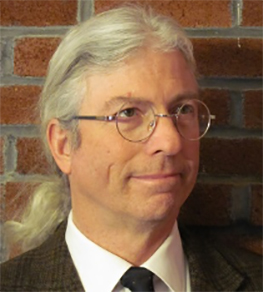
William E. Irwin, ScD, CHP
Vermont Department of Health
Dr. Irwin leads the Radiological and Toxicological Sciences Program at the Vermont Department of Health and is a Crew Chief for the Vermont Hazardous Materials Response Team. He is also a Certified Health Physicist and volunteer firefighter and emergency medical technician. He serves on the Radiological Operations Support Specialist (ROSS) Steering Committee for the CRCPD and helped develop ROSS initial training and the ROSS Position Task Book. He teaches ROSS and other chemical, biological, radiological and nuclear training courses for Counter Terrorism Operations Support (CTOS) out of the Nevada Test Site. Dr. Irwin is a Council Member of the National Council on Radiation Protection and Measurements NCRP) and has contributed to two NCRP Reports and an NCRP Commentary. He serves on the Chemical Operations Support Specialist (COSS), Biological Operations Support Specialist (BOSS) and ChemResponder Steering Committees and is a subject matter expert and instructor for the COSS and BOSS training program at the Center for Domestic Preparedness. His bachelor’s degree is in philosophy, his master’s degree is in radiological physics and his doctorate is in work environment engineering.
-
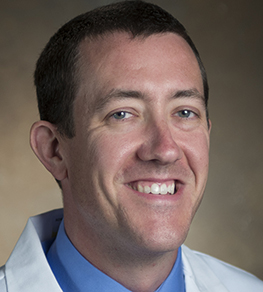
A. Kyle Jones, Ph.D.
The University of Texas MD Anderson Cancer Center
Dr. Jones is a diagnostic medical physicist with a clinical focus on interventional and intraoperative imaging. He has authored over 60 peer-reviewed publications and is presently a collaborator on multiple NIH grants. In 2013, Dr. Jones received the Farrington Daniels Award for best paper on Radiation Dosimetry in Medical Physics, and in 2019 Dr. Jones was elected a Fellow of the AAPM. Dr. Jones is the chair of the ACR Fluoroscopy Dose Index Registry Committee and recently finished leading the pilot phase of the Fluoroscopy Dose Index Registry. He is the physics editor for the Journal of Vascular and Interventional Radiology. Dr. Jones has been homebrewing beer for many years, a subject that he always enjoyed discussing with John Winston at CRCPD meetings.
-

Andrea Jones
U.S. Nuclear Regulatory Commission
Andrea Jones currently serves as a Senior International Relations Officer in NRC’s Export Controls and Nonproliferation Branch in the Office of International Programs (OIP). Ms. Jones is responsible for assessing and implementing policies and procedures concerning the NRC’s export and import licensing program, including inspection and enforcement. Prior to her current position, she served as Senior International Relations Officer in the International Coordination and Assistance Branch. Since joining the U.S. Nuclear Regulatory Commission in 1992, Ms. Jones has held several progressively responsible positions, including Nuclear Materials Inspector, Enforcement Specialist, and Health Physicist. Ms. Jones is also a 2012 graduate of NRC’s Leadership Potential Program. Ms. Jones received a Bachelor’s degree in Biology from Tennessee State University and a Master’s degree in Public Health from Meharry Medical College.
-
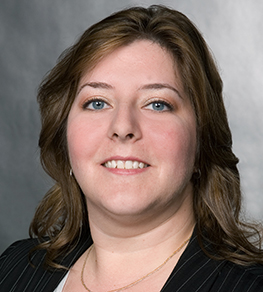
Janine Katanic
U.S. Nuclear Regulatory Commission
Dr. Janine Katanic is a Senior Health Physicist with the U.S. Nuclear Regulatory Commission, Region IV, Division of Nuclear Materials Safety, Materials Inspection Branch. She has been with the NRC for 20 years in various health physics and other capacities in Region IV and in NRC Headquarters. Dr. Katanic routinely serves as an invited instructor for NRC technical training courses. She received a doctoral degree in health physics from Purdue University and is a Certified Health Physicist with the American Board of Health Physics. Dr. Katanic is a 2020 recipient of the NRC Meritorious Service Award.
-
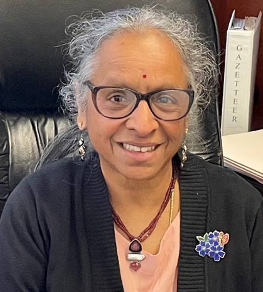
Janaki Krishnamoorthy, Ph.D.
New York State Department of Health
Dr. Janaki Krishnamoorthy is a Medical Physicist with the NYS DOH. She received a PhD in Nuclear Physics from Michigan State University. She is certified by the ABR in Radiation Oncology Physics and has worked radiation oncology centers in NY and CA with experience in both external beam therapy and brachytherapy physics. She joined the NYS DOH in 2001 and focuses on inspection of radiation oncology services and investigation of therapy medical events in NY State. She was the chair of H 34, the CRCPD working group for Helical IMRT and H 42, the working on Proton Beam Therapy. Currently Dr. Krishnamoorthy serves as a member of CRCPD’s H 48, the Committee on Radiation Therapy.
-
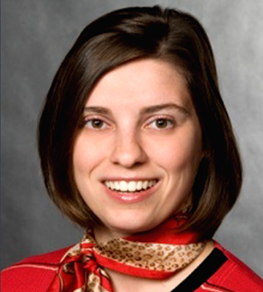
Kim Lukes
U.S. Nuclear Regulatory Commission
Kim Lukes graduated from the University of Maryland with a B.S. in Neurobiology and Physiology and an M.S. in Environmental Management. Kim joined the U.S. Nuclear Regulatory Commission (NRC) in 2001 and took part in the Nuclear Safety Professional Development Program. She began her NRC career in the Division of Rulemaking in the Office of Nuclear Material Safety and Safeguards (NMSS), as a General Scientist.
Currently, she works in the Source Management and Protection Branch, in the Division of Materials Safety, Security, State and Tribal Programs, in NMSS as a Project Manager. Kim works with a team of colleagues on NRC’s Integrated Source Management Portfolio (ISMP) which is comprised of three online radioactive source tracking systems: National Source Tracking System (NSTS), License Verification System (LVS) and the Web-Based Licensing System (WBL). Kim primarily works with WBL. Specifically, she works with the onboarding of Agreement States to WBL, and the transitioning of their data to the system, with frequent coordination with IT contractors, Agreement State staff, and NRC staff. In addition, she is involved in a number of special projects to enhance and modernize WBL, such as the integration of the Agencywide Documents Access and Management System, which is the official NRC recordkeeping system, with WBL and development of an online application through the WBL interface that will permit radioactive materials applicants/licensees to submit license applications.
-
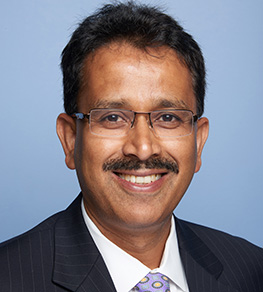
Mahadevappa Mahesh, MS, PhD, FAAPM, FACR, FACMP, FSCCT, FIOMP
Johns Hopkins University
Mahadevappa Mahesh, MS, PhD, is the Professor of Radiology and Cardiology at the Johns Hopkins University School of Medicine, Baltimore, MD. He is also the Chief Physicist at the Johns Hopkins Hospital, Baltimore, MD.
Dr Mahesh is board certified from the American Board of Radiology (ABR) in diagnostic radiological physics and is a member of the Radiation Control Advisory Board (RCAB) for the State of Maryland. His research interests are in medical imaging, particularly in areas of computed tomography (CT), interventional fluoroscopy and digital mammography.
Dr Mahesh is currently Associate Editor for the Journal of American College of Radiology and board member for the American Association of Physicists in Medicine (AAPM) and the American College of Radiology (ACR). He was 2nd Vice-President of RSNA (2011). He serves as subject-matter-expert (SME) to the United Nations-International Atomic Energy Agency (UN-IAEA). He serves as subject-matter-expert (SME) to the United Nations-International Atomic Energy Agency (UN-IAEA) and is the national contact person for the United States in the UNSCEAR.
Dr Mahesh is the author of the textbook titled ‘MDCT Physics: The Basics – Technology, Image Quality and Radiation Dose’.
Dr Mahesh is a fellow of the AAPM (2007), ACR (2009), American College of Medical Physics (2011), Society of Cardiovascular Computed Tomography (SCCT) (2011) and International Organization of Medical Physics (IOMP) (2019).
-
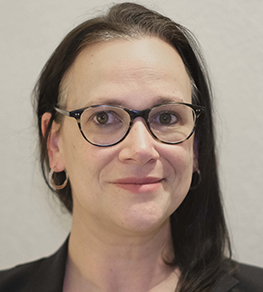
Rebecca Marsh, Ph.D.
M.D. Anderson Cancer Center
Dr. Rebecca Marsh received her M.S. and Ph.D. in Medical Physics from M.D. Anderson Cancer Center in Houston. She is currently an Associate Professor and Chief of Radiological Sciences at the University of Colorado School of Medicine. Dr. Marsh is involved in research about patient dose from diagnostic imaging and dose optimization techniques. Dr. Marsh also works to improve communication with patients about radiation risk.
Dr. Marsh serves on multiple national committees with a variety of organizations, including the American Board of Radiology and the American Association of Physicists in Medicine. She chairs the AAPM CARES committee, which consists of representatives from fifteen different professional organizations, including radiologic technologists, educators, regulators, physicists, and radiologists. The CARES committee is working to improve communication and education about patient gonadal and fetal shielding.
Outside of work, Rebecca enjoys hiking in the beautiful Colorado mountains, playing music, and spending time with her two wonderful children, husband, and three amazing step-children.
-
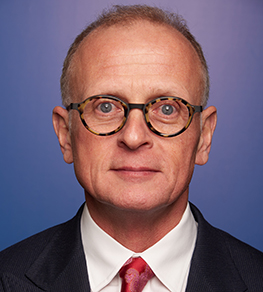
Richard J. Martin, JD
American Association of Physicists in Medicine (AAPM)
Richard J. Martin, JD, is the Government Relations Program Manager for the American Association of Physicists in Medicine (AAPM). His expertise in healthcare policy as well as regulatory and legislative advocacy has been developed over a career including government relations staff positions with the American Society for Radiation Oncology (ASTRO), American Academy of Orthopedic Surgeons (AAOS) and American Academy of Dermatology (AAD). Mr. Martin received his BA and JD degrees from Tulane University, and he maintains membership in the Louisiana, Virginia and District of Columbia bars.
-
John McCormick
Bionomics
John McCormick is approaching 40 years in the Broker side of the business. He founded Bionomics in 1988, is “Radioactive Garbologist” or Guru, broker for the SCATR program, and has a broad range of clients; Hospitals, Universities/Colleges, Research, Medical, Utilities, Industry, Government.
-
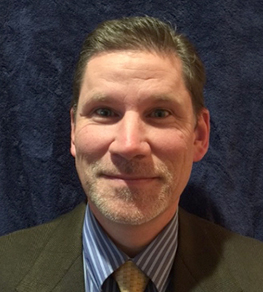
Matt McKinley
Commonwealth of Kentucky
Matt has worked for the Commonwealth of Kentucky’s Radiation Health Program since 2003, first as the supervisor of the Radioactive Materials Section, and then, since 2010, as the Radiation Control Program Director.
As supervisor, he was responsible to re-establish the State’s Agreement State Program that had recently experienced a 100% management and staff turn-over. Through this process, he gained a comprehensive understanding of operational requirements and an in depth insight into the management of the Agreement State Program.
As director, his scope of responsibility expanded to include oversight of the Radiation Producing Machines Program and the State’s Radiochemistry Laboratory, and coordination of environmental remediation and emergency response activities.
He served for 8 years in the Navy’s Nuclear Power Program and currently serves as a Nuclear Medical Science Officer assigned to the USAR Consequence Management Unit as a nuclear and radiological subject matter expert.
In addition to his professional education received throughout his career, he has a degree in public administration from Kentucky State University. He has previously served as the OAS Chair, as an IMPEP team member, as the OAS liaison on the Management Review Board.
He is active in the ongoing development of the Radiological Operations Support Specialist (ROSS) program and serves as a ROSS Strike Team leader and an advisor to the HS-ER-4 CRCPD Work Group.
-
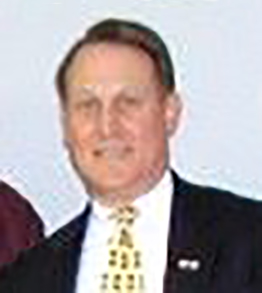
Anthony “Tony” McMurtray
U.S. Nuclear Regulatory Commission
Mr. Anthony McMurtray has been at the NRC for 28 years and is currently a Senior Project Manager with the NRC’s Office of Nuclear Materials Safety and Safeguards in the Division of Materials Safety, Security, State, and Tribal Programs. Mr. McMurtray is the lead project manager for the Phase 3 materials inspection procedures revisions project and previously led the project that revised all 21 volumes of the NUREG-1556 series (materials licensing guidance). He previously served as a Branch Chief in the Office of Nuclear Reactor Regulation dealing with reactor mechanical and civil engineering issues. He also served as a Branch Chief in the Office of Nuclear Security and Incident Response and was responsible for incident response coordination and emergency preparedness. Earlier in his career at the NRC, he was a Senior Resident and Resident Inspector in Regions I (Peach Bottom Atomic Power Station in Pennsylvania) and III (Point Beach Nuclear Plant in Wisconsin). Mr. McMurtray started his career as a Fluid and Mechanical Engineer at Norfolk Naval Shipyard overseeing submarine and nuclear surface ship repair. He received his bachelor’s degree in Civil Engineering from University of Maryland.
-
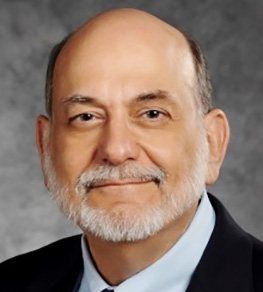
Donald L. Miller, MD
Food and Drug Administration
Donald L. Miller, MD, an interventional radiologist, is the Chief Medical Officer for Radiological Health in the Office of In Vitro Diagnostics and Radiological Health at FDA’s Center for Devices and Radiological Health. He earned a B.A. in Molecular Biophysics & Biochemistry from Yale University and an M.D. from the New York University School of Medicine. Prior to joining FDA, he practiced interventional radiology for 30 years at the National Institutes of Health and the National Naval Medical Center in Bethesda, MD. He is a Fellow of both the Society of Interventional Radiology and the American College of Radiology and an Honorary Member of the American Association of Physicists in Medicine. Dr. Miller was Professor of Radiology at the Uniformed Services University of the Health Sciences in Bethesda, Maryland from 1993 to 2012, with a principal research interest in radiation protection in medicine. He is a Scientific Vice President of NCRP and currently serves on NCRP’s Board of Directors and as Chair of NCRP Program Area Committee 4 (Radiation Protection in Medicine). He has also served as Vice-Chair of ICRP Committee 3 (Radiological Protection in Medicine), as a consultant to the IAEA, and is currently a member of WHO’s Core Group of Experts on issues related to radiation protection of patients and staff. Dr. Miller served as Associate Editor of Radiology and the Journal of Vascular and Interventional Radiology and is the author or co-author of more than 200 papers in peer-reviewed journals and more than 40 book chapters and reports.
-
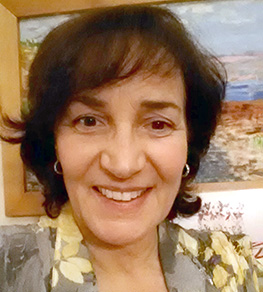
Michele Monti
Centers for Disease Control and Prevention
Michele Monti is an epidemiologist for the CDC National Center for Environmental Health, Environmental Health Tracking Section with responsibilities for national surveillance of environmental contaminants associated with chronic diseases, especially drinking water contaminants, pesticides and radon. She has a Master of Public Health (MPH) degree from Virginia Commonwealth University and a Master of Science in Environmental Sciences from the University of Virginia.
-
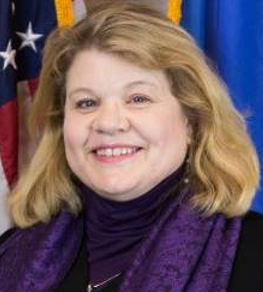
Mary Navara
Minnesota
Mary Navara is the Director Member for Minnesota. Ms. Navara obtained a bachelors in Business Management/Human Resources and a Bachelors in Nursing with an advanced degree in Occupational Health/Environmental Health and Safety. Her experience includes work in Public Health, a cancer center, and in Occupational and Environmental Health and Safety at 3M. This past year, she was tasked to the State Emergency Operations Center for emergency response. Her Environmental Health section manager role includes regulatory oversight of Environmental Health programs including radon, tobacco control, indoor arenas, asbestos, lead, radiation control, radiological emergency response, and Environmental Lab Accreditation.
-
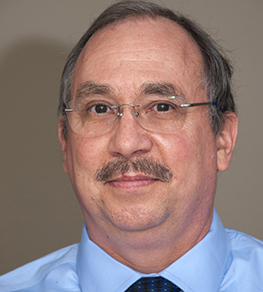
Tony Nesky
U.S. Environmental Protection Agency
Tony Nesky is a Public Affairs Specialist in the Radiation Protection Division of the United States Environmental Protection Agency (EPA). He is responsible for public communications on EPA’s radiological emergency response capabilities and radiation protection standards. His work at EPA has given him years of experience in explaining radiation science and issues to the public via publications, correspondence and meetings. Tony was part of the team tasked with communicating about radiation levels in the United States and EPA’s efforts during the 2011 Fukushima Daiichi nuclear accident. He is an active participant and planner in radiological emergency response exercises, and given presentations on radiation risk communication at international conferences.
-

Minh-Thuy Nguyen
U.S. Nuclear Regulatory Commission
Ms. Minh-Thuy Nguyen is a nuclear engineer in the Office of Nuclear Regulatory Research at the U.S. Nuclear Regulatory Commission (NRC). She is the project manager for the Radiation Exposure Information and Reporting System for radiation workers and the “Occupational Radiation Exposure at Commercial Nuclear Power Reactors and Other Facilities” report (NUREG-0713); and she is the abnormal occurrence program coordinator and lead author for the annual Report to Congress on Abnormal Occurrences (NUREG-0090). Ms. Nguyen also serves as the current chair of the NRC Asian Pacific American Advisory Committee (APAAC), advocating Asian Pacific American employee concerns and promoting diversity and cultural awareness. She received her Bachelor of Science in Nuclear Engineering from Missouri University of Science & Technology in 2015.
-
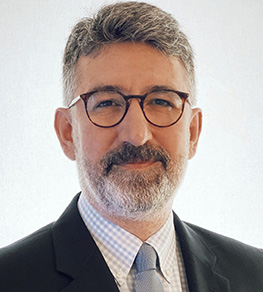
H. Burçin Okyar
International Atomic Energy Agency
Mr. H. Burçin Okyar has 30 years of experience in the field of radiation protection and serves as a Radiation Safety Specialist in the Division of Nuclear Safety and Security of the International Atomic Energy Agency (IAEA) in Vienna, where he coordinates the Occupational Radiation Protection Appraisals (ORPAS) missions, contributes to the development of international requirements and guidance related to occupational radiation protection and naturally occurring radioactive material (NORM), and manages the Occupational Radiation Protection Network (ORPNET) of the IAEA. He is responsible for the publication of IAEA Safety Reports Series for occupational radiation protection in industrial processes involving NORM.
Before joining the IAEA, he worked with the OECD Nuclear Energy Agency (NEA) in Paris /France and he was the Scientific Secretary of the Working Party on Nuclear Emergency Matters (WPNEM) of the Committee on Radiation Protection and Public Heath (CRPPH) and served as the Scientific Secretary of the Information System on Occupational Exposure (ISOE), which is a joint undertaking of the NEA with the IAEA.
Okyar was responsible for the organisation of NORM VIII (2016, Brazil) and NORM IX (2019, US) symposiums and has been assigned as the IAEA Technical Officer for the preparation of the NORM X symposium in 2022 in the Netherlands.
-
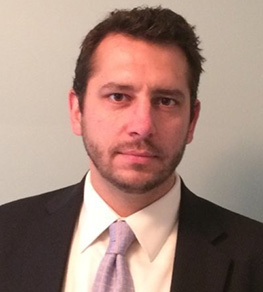
Brendan Palmer
Chainbridge Technologies
Brendan Palmer is the Director of CBRN Programs at Chainbridge Technologies. He has over a decade of experience in the national security and radiological/nuclear emergency response sectors. Brendan has planned national-level exercises, supported domestic and international operations and managed the development of numerous rad/nuc software applications. In 2011 Brendan deployed as Executive Advisor to the Senior Energy Official as part of the Department of Energy/National Nuclear Security Administration (DOE/NNSA) response to the Fukushima Daiichi Nuclear Power Plant disaster in Japan.
-
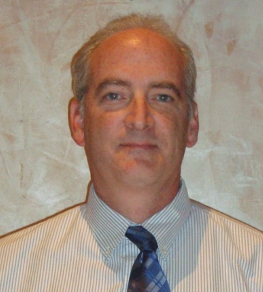
Don Parry
State of Michigan Radiation Safety
Don Parry is a health physicst with the State of Michigan’s Radiation Safety Section. He has been with the State of Michigan for 35 years. Don has a bacholor’s degree in Applied Physics From Michign Technological University and a Master’s degree in Health Physics from Illinois Institute of Technology. Don is a certified health physicist. He currently oversees a team of health physicists that perform inspections of radiation machines.
-
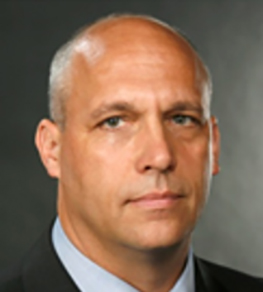
David (Dave) L. Pelton
U.S. Nuclear Regulatory Commission
David (Dave) L. Pelton serves as Director, Division of Nuclear Materials Safety, Region III.
Mr. Pelton joined the U.S. Nuclear Regulatory Commission (NRC) career in 1997 as a resident inspector in Region III and has held progressively responsible positions including resident inspector and senior operator licensing examiner, Region III; senior resident inspector, Region I; executive technical assistant, Office of the Executive Director for Operations; and a variety of branch chief positions in the Division of License Renewal, Policy and Rulemaking, and the Division of Operating Reactor Licensing, Office of Nuclear Reactor Regulation. Dave joined the Senior Executive Service (SES) in April 2016, as the Deputy Director, Division of Reactor Projects, Region I.
Before coming to the NRC, Dave worked at the Portsmouth Naval Shipyard in the Division of Nuclear Test Engineering and the Division of Nuclear Performance Assessment. He received a Bachelor of Science Degree in Mechanical Engineering from the Pennsylvania State University and is a graduate of the NRC Team Leader Development Program and SES Candidate Development Program.
-
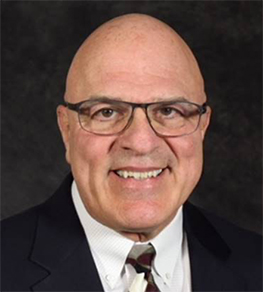
Robert Pizzutiello, MS, FAAPM, FACR, FACMP
Radiation Emergency Services, LLC
Bob Pizzutiello is board-certified by the ABR and ABMP. In 1983 he founded Upstate Medical Physics and in 2009 created the first private-practice CAMPEP-Accredited Diagnostic Imaging Medical Physics Residency in the country.
Bob has been awarded fellowship in the AAPM, ACR and ACMP. In 2016 he was awarded the Edith Quimby Lifetime Achievement award by AAPM. He has been active with multiple professional and scientific organizations, including serving on the National Mammography Quality Assurance Advisory Committee, co-author of NCRP Report 177 on Radiation Protection in Dentistry and several AAPM Practice Guidelines.
Bob retired in 2016 and has remained active in many professional areas, including board positions as Vice-President of CAMPEP (The Commission on Accreditation of Medical Physics Education Programs), Treasurer of Intersocietal Accreditation Commission (IAC) and Vice-President of the NY State Radiological Society. Bob currently serves on 8 AAPM Committees.
A passionate advocate for the profession, Bob has been invited to lecture at more than 300 professional and scientific groups in the USA, South America and China, and continues to give lectures to various professional groups.
-

Wendy Renno
Radiation Emergency Services, LLC
Wendy has spent nearly 15 years working in a variety of field and staff positions related to radiological emergency response. Prior to launching Radiation Emergency Services, LLC., she spent the seven years working in radiological emergency response with the U.S. Department of Energy (DOE), where she supported DOE’s leadership and management of the Federal Radiological Monitoring and Assessment Center (FRMAC). While working with FRMAC, Wendy supported multiple roles, including: Liaison Course Supervisor, Technical Team Lead, Assessment Scientist and Manager, Laboratory Analysis Manager, and Mission Manager with the Aerial Measuring Systems (AMS).
Wendy's operational experience is diverse and enables her to bring a unique perspective on scientific issues in operational settings. As a FRMAC Assessment Manager during the Japan Fukushima Daiichi Nuclear Power Plant emergency, Wendy was heavily involved in the creation of many of the FRMAC radiological data products that were used to support decision making by the U.S Department of Defense, U.S. Department of State, White House, and Government of Japan.
Wendy routinely supports radiation emergency preparedness drills and training throughout the country through her meticulous planning and executing large scale exercises. She has been the lead planner for all Department of Energy led Consequence Management exercises for the last 4 years. Additionally, she has provided extensive support to FEMA Radiological Emergency Preparedness (REP) Ingestion Pathway Exercises (IPX) with nuclear power plants.
Wendy earned both her Doctor of Radiochemistry and a Bachelor of Science in Chemistry from the University of Nevada, Las Vegas.
-
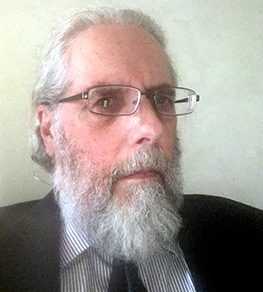
James Rubenstone, Ph.D.
U.S. Nuclear Regulatory Commission
Dr. James Rubenstone is the Chief of the Material Control and Accounting Branch in the Office of Nuclear Material Safety and Safeguards, U.S. Nuclear Regulatory Commission. In his current role he supervises staff in material control and accounting and other aspects of domestic and international safeguards for nuclear material. He joined NRC in 2003 and has worked in multiple areas related to storage and transportation of commercial spent nuclear fuel, reprocessing, risk assessment, natural hazards, and the ultimate disposal of spent nuclear fuel and high-level radioactive waste. His previous positions at NRC include serving as the Acting Director and Deputy Director of the Yucca Mountain Directorate for the review of a license application for a deep geologic repository for spent fuel and high-level waste. Prior to joining NRC, he held research positions at Columbia University in New York, leading basic and applied research in Earth Sciences. He is a graduate of the College of William and Mary and has a Ph.D. in Geological Sciences from Cornell University.
-
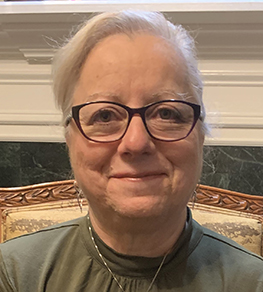
Adela Salame-Alfie, PhD
Centers for Disease Control and Prevention
Dr. Salame-Alfie is a Senior Service Fellow in the Radiation Studies Section, Emergency Management, Radiation and Chemical Branch, in the Center for Environmental Health at CDC. Previously, she worked for 22 years at the New York State Department of Health in various capacities including Chief of the Environmental/Radon Section, Director for the Bureau of Environmental Radiation Protection and Director of the Division of Environmental Health Investigations. Additionally, she served as the Center for Environmental Health Preparedness Director. She is a council member of the National Council on Radiation Protection and Measurements (NCRP). She is a Lifetime member of the Conference of Radiation Control Program Directors (CRCPD) and served as Chair and member of the Board of Directors, chaired several committees and received the 2014 Gerald S. Parker Award. She is a Fellow member of the Health Physics Society.
Dr. Salame-Alfie has extensive experience in radiological emergency preparedness and has published and co-authored many publications on the subject, including the “Handbook for Responding to a Radiological Dispersal Device – First Responder Guide”, and most recently the National Council on Radiation Protection and Measurements (NCRP) Report 179 and Commentary 28 on Emergency Worker Dosimetry. She co-chaired the 2017 NCRP Annual Meeting “Assessment of National Efforts in Emergency Preparedness for Nuclear Terrorism: Is There a Need for Realignment to Close Remaining Gaps?”
Dr. Salame-Alfie obtained her Master’s and Ph.D. in Nuclear Engineering from Rensselaer Polytechnic Institute in Troy, NY. She obtained her Bachelor’s in Energy Engineering from Universidad Autónoma Metropolitana in Mexico City.
-
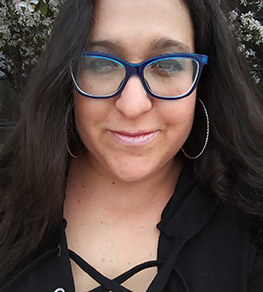
Vered Shaffer, Ph.D.
U.S. Nuclear Regulatory Commission
Vered Shaffer is a health physicist at the Office of Nuclear Regulatory Research at the U.S. Nuclear Regulatory Commission. She is the Program Manager of the Radiation Protection Code Analysis and Maintenance Program (RAMP).
Vered holds a Bachelor of Science degree in BioNuclear Engineering from University of California, Berkeley and both a Master of Science and Philosophy of Science degree in Nuclear Engineering from Massachusetts Institute of Technology.
-
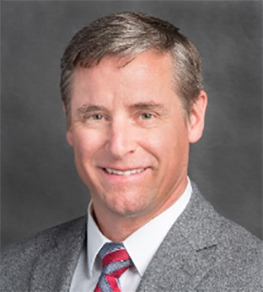
Todd Smith, Ph.D.
U.S. Nuclear Regulatory Commission
Dr. Todd Smith is the Senior Level Advisor for Emergency Preparedness and Response in the Office of Nuclear Security and Incident Response at the US NRC. For the past 8 years, he served in the Policy and Oversight Branch developing emergency preparedness policies, regulations, and guidelines for NRC licensed facilities and conducting related research to advance the state-of-the-practice in radiological emergency preparedness and response. Prior to joining the NRC, Dr. Smith served in the United States Navy as a Submarine Warfare Officer, including assignments as Naval Reactors Lead Engineer for Advanced Reactor Digital Instrumentation & Control (I&C), Engineering Department Head, and Special Assistant for Radiological Emergency Planning at Submarine Group 10 in Kings Bay, GA. He graduated from Purdue University with a PhD in Nuclear Engineering, specializing in thermal-hydraulics and reactor safety and has a Master of Science in Radiation Health Physics from Oregon State University.
-

Kathryn Snead
U.S. Environmental Protection Agency
Kathryn Snead currently serves as the Acting Center Director for the Center for Radiological Emergency Management in EPA’s Office of Air and Radiation. She has over twenty years of experience in the radiation protection arena, serving as a subject matter expert in radiation site survey, emergency preparedness, and emergency response. Ms. Snead participated in the original EPA response to the 2011 Japan Nuclear Incident. As a member of EPA’s Radiological Emergency Response Team, she has responded to non-radiological emergencies as well, including Hurricane Katrina, Deepwater Horizon, the Gold King Mine Release, and Hurricanes Irma and Maria. Ms. Snead has been a member of the Multi-Agency Radiation Survey and Site Investigation (MARSSIM) Workgroup since coming to EPA and currently serves as the MARSSIM Workgroup Chair.
-
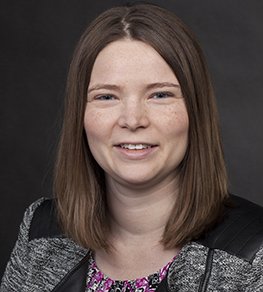
Katie Tapp
U.S. Nuclear Regulatory Commission
Katie Tapp joined the U.S. Nuclear Regulatory Commission (NRC) in September 2006. She is a medical physicists currently on the Medical Radiation Safety Team. Previously she held a variety of positions at the NRC, including being a license reviewer and inspector in the Region III office and a health physicist in the Office of Research. Katie received her doctorate in medical physics from Purdue University and her bachelors in nuclear engineering from University of Illinois.
-

Cindy Tomlinson
ASTRO
Cindy Tomlinson is the Senior Patient Safety and Regulatory Affairs Manager at ASTRO where she is responsible for monitoring the NRC, the FDA and CMS’s Quality Payment Program. Cindy has 20 years of experience working for health care trade associations and specialty societies. She holds an MPP from Johns Hopkins University and a BA in History from New York University.
-
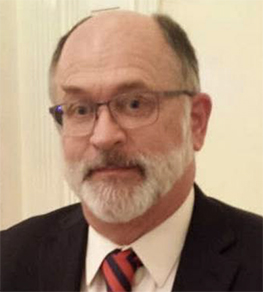
JOSEPH ANDREW TOMPKINS, CHP
CRCPD
Certified Health Physicist (CHP) with 40 years of technical support experience in radioisotope production, purification, source fabrication & handling, shipping package design and testing, radioactive material management, and health physics associated with sealed sources. His most recent work experience is with the CRCPD in Frankfurt, KY, where he is assisting with characterization and source recovery planning in the SCATR program.
Mr. Tompkins worked in the Waste Technology Section (NE/NEFW) of the International Atomic Energy Agency, in Vienna Austria (2014 – 2017). He was able to assess the state or condition of radioactive source storage facilities, characterize disused radioactive sources, including teletherapy heads and irradiators, confirm inventories, consolidate gauges and sources, and observe Cat 1 source removals for IAEA. Additionally, he taught documentation, record keeping, search and secure, and source inventory classes as well as basic health physics.
Mr. Tompkins has 18 years of experience associated with the Off-site Source Recovery Project (OSRP) at Los Alamos National Laboratory (LANL). OSRP is a project responsible for the recovery of over 42,000 sealed sources into compliant storage at LANL since 1998 (http://osrp.lanl.gov). His work for DOE/NNSA included problems associated with location, packaging, and transportation of obsolete sealed sources in the USA. Mr. Tompkins work has also been directly involved in the field work, cost analysis, transportation evaluation, and disposal option evaluation for sealed sources.
Mr. Tompkins has a MS in Nuclear Engineering (Univ. of New Mexico) and a BS in Chemical Engineering (West Virginia Univ). He has been a Certified Health Physicist since 1997.
-
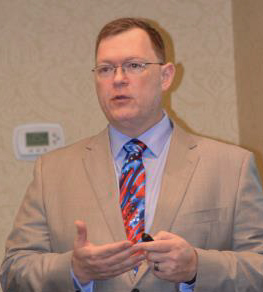
Thomas K. Warnock
Federal Emergency Management Agency
Mr. Thomas Warnock is chief of the Radiological Emergency Preparedness Program (REPP) Branch within FEMA’s Technological Hazards Division, which coordinates the national effort to provide state, local and tribal governments with radiological preparedness planning, training, and exercise guidance, and in cooperation with the Nuclear Regulatory Commission ensures capabilities exist to prepare for, respond to, and recover from commercial nuclear power plant incidents. Mr. Warnock is responsible for strategic direction and implementation of this program, impacting over thirty states. He joined REPP in January 2021.
Prior to joining REPP, he was acting chief of FEMA’s Chemical Stockpile Emergency Preparedness Program (CSEPP), responsible for strategic direction of a community-focused preparedness program in cooperation with the U.S. Army. He led multi-jurisdictional working groups examining protective actions strategies, led several international engagement opportunities, and supported disasters including 9/11 and Hurricane Katrina. Mr. Warnock worked over twenty years with CSEPP, joining after a year training FEMA disaster assistance staff.
Prior to entering Federal service, Mr. Warnock worked for the American Chemistry Council’s Chemical Transportation Emergency Center (CHEMTREC®) assisting first responders, industry, and the public with hundreds of hazardous materials emergencies annually.
Mr. Warnock has over twenty-eight years of first responder experience and is currently chief of a volunteer department in Northern Virginia. He was an instructor with the Fairfax County Fire and Rescue Department from 1996 to 2018. Mr. Warnock is a graduate of FEMA’s Master Exercise Practitioner program.
-
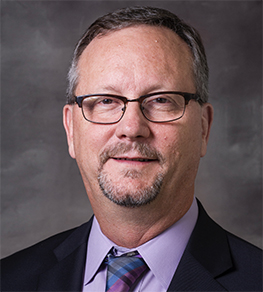
Robert C. Whitcomb, Jr., PhD, CHP
National Center for Environmental Health
Robert Whitcomb joined the Centers for Disease Control and Prevention (CDC) in June 1993. He is the Chief of the Radiation Studies Section, Division of Environmental Health Science and Practice, National Center for Environmental Health. In this position, he serves as Radiation Subject Matter Expert and CDC Spokesperson for technical and public health issues related to environmental radiation and nuclear/radiological emergency response.
Previously, Dr. Whitcomb worked with the Illinois Department of Nuclear Safety. His primary area of expertise is the assessment of radionuclides released to the environment and the impact on public health. He has authored or coauthored numerous journal articles and is a recognized expert in domestic and international public health response in nuclear/radiological emergencies.
Dr. Whitcomb is a member of National Council on Radiation Protection and Measurements and the Health Physics Society. He is certified in comprehensive practice by the American Board of Health Physics and served on the Board of Directors of the Health Physics Society (2004 – 2007). In addition, he serves on the World Health Organization’s international roster of experts in radiation, environmental hazards and health effects. Dr. Whitcomb holds a BS in Biology from Florida Southern College, an MS and a PhD in Environmental Engineering Sciences from the University of Florida.
-
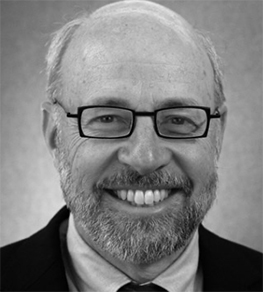
Jerry White
Colorado Associates in Medical Physics
Jerry White is a clinical medical physicist in Colorado Springs, retired from full-time practice, affiliated with Colorado Associates in Medical Physics. He is board certified in Radiation Oncology Physics, Diagnostic Medical Physics and Medical Nuclear Physics.
He has been active in professional associations (American Association of Physicists in Medicine, American Society for Radiation Oncology and the American College of Radiology). He is a Fellow of the AAPM and ACR and has served as Secretary, President and Chairman of the Board of the AAPM. Currently Jerry is involved at the national level with policy development related to payment systems for radiation oncology. He is a past Chairman of the Board of Directors of Medical Physics for World Benefit and has provided support for medical physics related needs in developing countries, having served as a consultant to the International Atomic Energy Agency in Botswana. Currently he is the Chair of the AAPM Ad Hoc Committee on Covid-19 Response.
He has been a speaker on health policy issues within Colorado and nationally for more than a decade. He became interested in the topic of universal health after encountering firsthand the financial struggles of cancer patients. He has visited many countries (traveling with his wife on a tandem bicycle) whose citizens provide universal care for themselves and their families. These experiences cemented in his mind the need for universal healthcare in the United States.
-
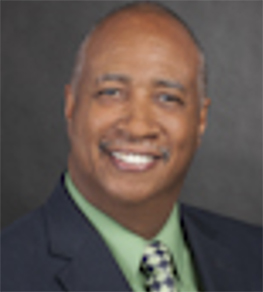
Kevin Williams
U.S Nuclear Regulatory Commission
Kevin Williams serves as the Director, Division of Materials Safety, Security, State, and Tribal Programs, Office of Nuclear Material Safety and Safeguards (NMSS).
Mr. Williams joined the U.S Nuclear Regulatory Commission (NRC) in September 2002, as a technical reviewer in the Office of Nuclear Reactor Regulation, Division of Inspection and Program Management. In 2004, he transitioned to a technical reviewer position in the Office of Nuclear Security and Incident Response (NSIR), Division of Preparedness and Response, and subsequently progressed through positions of increased responsibility focused on emergency preparedness-related licensing, guidance, outreach, rulemaking and policy development, and oversight programs. Mr. Williams has also successfully completed assignments as the acting Chief, Spent Fuel Storage and Transportation Branch, NMSS; Chief, New Reactor Licensing Branch, NSIR; Acting Deputy Director, Division of Preparedness and Response, NSIR; Director, Program Management, Policy Development and Analysis, NSIR; Acting Deputy Director, Division of Nuclear Materials Safety, Region IV; and Acting Deputy Controller, Office of the Chief Financial Officer. In June 2017, Mr. Williams joined the Senior Executive Service (SES) in the position of Deputy Director, MSST/NMSS.
Before joining the NRC, Mr. Williams began his nuclear career at the Duane Arnold Energy Center, Palo, Iowa, where he worked for over 16 years. He held various positions in the areas of Radwaste, Health Physics, Shift Technical Advisor, and Emergency Preparedness. Mr. Williams earned a Bachelor’s Degree in Business Administration with a Chemistry Minor from Coe College in Cedar Rapids, Iowa.
Posters
-
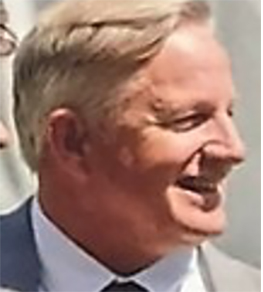
Lee Cox
NC Radiation Protection
Lee Cox is the Chief of the NC Radiation Protection Section. He has served the state for 28 years. He is also the State Liaison Officer appointed by Governor Cooper. Lee is currently serving as the National Materials Program Co-Champion representing the Organization of Agreement States along with Duncan White who is representing the NRC.
-
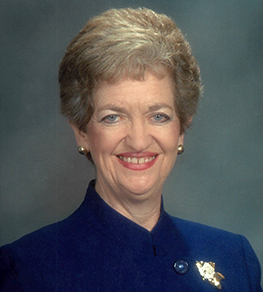
Ruth E. McBurney
Conference of Radiation Control Program Directors (CRCPD)
Ruth McBurney is the Executive Director of the Conference of Radiation Control Program Directors (CRCPD). Prior to taking that position in January 2007, she had 29 years of service in radiation control programs in Texas and Arkansas. Ms. McBurney is currently serving as a Member of Council of the National Council on Radiation Protection and Measurements and is a past President of the Health Physics Society. Ms. McBurney holds a Master of Science Degree in Radiation Sciences from the University of Arkansas for Medical Sciences and is a Diplomate of the American Board of Health Physics.
-
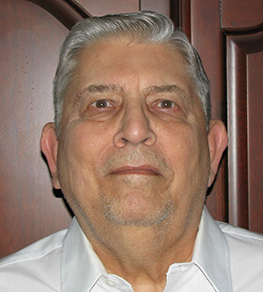
Charles "Russ" Meyer
University of Texas at Austin
Charles "Russ" Meyer has been employed by the Conference of Radiation Control Program Directors, Inc. (CRCPD) since July 30, 2010. His responsibilities consist of providing technical and administrative assistance on matters related to general health physics, conducting research and providing general technical information and administrative services on radiation protection matters to staff in the Office of Executive Director (OED), to commercial firms, government agencies, members of the CRCPD, other professional associations and the general public. He also serves as OED’s technical expert in radiation protection; evaluates the technical accuracy of CRCPD information relating to general health physics matters; keeps abreast of technical developments and innovations in the field of radiation protection; and responds to diverse inquiries regarding radiation sources and radiation control programs. Lastly, he manages the technical component of the CRCPD National Orphan Radioactive Material Disposition Program and the Source Collection and Threat Reduction Program.
-
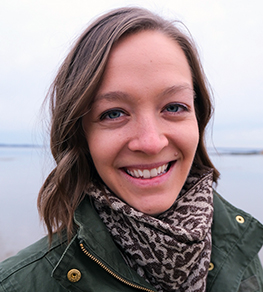
Alexa Sieracki
U.S. Nuclear Regulatory Commission
Alexa Sieracki is a Rulemaking Project Manager at the Nuclear Regulatory Commission. She joined the agency 8 years ago upon graduating from the University of Southern California with degrees in geology and chemistry.
-
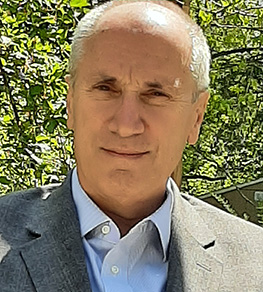
Duncan White
U.S. Nuclear Regulatory Commission
Duncan White has nearly 40 years of state and federal experience in radiation protection. Mr. White is currently a Senior Health Physicist with the NRC’s Office of Nuclear Materials Safety and Safeguards and has served in a number of positions during his 30-year career at the NRC. Duncan also serves as the National Materials Program Co-Champion representing the NRC along with Lee Cox who represents the Organization of Agreement States.
-
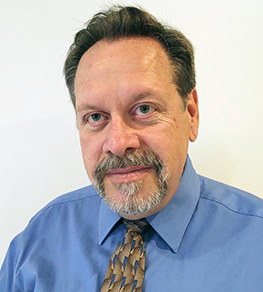
Mark Yeager
Oak Ridge National Laboratory
Mark Yeager is a former regulator with the South Carolina Department of Health and Environmental Control (SCDHEC), Radioactive Materials Agreement State Program. During a 37 year career with the agency, beginning in the radiological laboratory as a Health Physics Technician to his retirement as a Senior Health Physicist within the radioactive waste management division his responsibilities have included environmental monitoring, analytical services, licensing and inspection of state radioactive material licensees, radiological decommissioning, enforcement actions, technical assistance, providing training, consultation, homeland security, fixed nuclear facility/radiological material incident response and waste management. After the terrorist attacks of September 11, 2001 and continuing to the present, Mark has been involved with implementation increased controls and implementation of subsequent regulatory requirements to ensure the security of radioactive materials both at fixed licensed facilities and during transportation. He is currently employed by Secured Transportation Services, Buford, Georgia as a consultant and sub-contractor for Oak Ridge National Laboratory.
Mark has been a proud member of the CRCPD for over thirty years and currently serves as an advisor for the E-5 Committee on Radioactive Waste Management. He was also a member of the former E-26 Radioactive Material Transportation Committee and several other ad-hoc committees.
Moderators
-
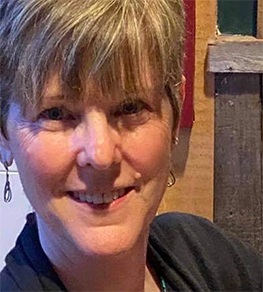
Karen Farris
Massachusetts Department of Public Health
Karen Farris is the Mammography/Healing Arts Supervisor for the Massachusetts Department of Public Health’s Radiation Control Program and has been with the Program since 1994. Karen conducts mammography inspections under Massachusetts regulations and the FDA MQSA program. She also participates in nuclear power plant exercises and handles all x-ray/mammography consumer complaints. In addition, Karen is a member of the Department’s emergency response team for radiological incidents and has assisted in updating the Healing Arts, Radiological Technologist licensing and Mammography regulations. Karen has made presentations at various professional society seminars in Massachusetts and has presented at the CRCPD Annual Meetings on NEXT Updates.
Karen received her Associates Degree in Liberal Arts and Sciences and Associates in Radiologic Technology from Middlesex Community College, her Bachelor of Science in Health Administration from St. Joseph’s College of Maine and her Masters in Health Administration from Regis College.
Karen is an active member of the CRCPD and currently serving on the Board as a Member-at-Large. She is an advisor and former chair of the Mammography Committee and is a member, and former chair of the NEXT Committee. Karen served as the Breast Cancer Organizations Liaison and in 2007 traveled to Taiwan to speak at a workshop on Quality Assurance and conducting mammography inspections.
Karen is the current Vice President of the Massachusetts Society of Radiologic Technologist. She is a board member of her condo association, which oversees a $1.8 million dollar budget. Karen continues to maintain her Massachusetts Radiological Technologist license and ARRT certifications.
-
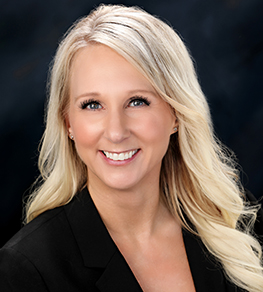
Angela Leek, CHP
Iowa Department of Public Health
Angela Leek, CHP is the radiation control program director for the Iowa Department of Public Health where she is responsible for the licensing and inspection activities for all aspects of radiation producing machines and radioactive materials within Iowa. Angela is also responsible for coordinating dose assessment and providing technical advice for public and worker protective actions throughout radiation emergency response.
Angela is also supports the development and implementation of the Radiological Operations Support Specialist (ROSS) program in coordination with the FEMA-CBRN Office, specifically working to develop and coordinate content to support ROSS competency maintenance. She actively participates in national level exercises and develops training and presentations for various groups on both the ROSS program and overall radiation emergency planning and response.
Angela currently serves on the Conference for Radiation Control Program Directors (CRCPD) Board of Directors as Council Chair for Suggested State Regulations (SSRs) and will take the Chair position in May 2021.She is Iowa’s governor-appointed state liaison officer to the Nuclear Regulatory Commission, is Iowa’s voting member for the Organization of Agreement States, and maintains active memberships with organizations across all aspects of radiation protection including the Health Physics Society.
Angela has been involved in the radiation field for 25 years. She started in the medical field as a radiological technologist and transitioned to a health physics focus in 2006. Angela is a Certified Health Physicist, earned her Master’s degree in Radiation Health Physics from Oregon State University and is currently working on her PhD at Iowa State University.
-
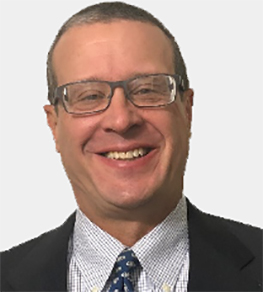
Jeff Semancik, CT DEEP
Connecticut Department of Energy and Environmental Protection
Jeff Semancik has served as the director of the Radiation Division for the Connecticut Department of Energy and Environmental Protection (DEEP) since 2014. Jeff is the Past Chair of the Conference of Radiation Control Program Directors (CRCPD). Jeff also serves on several CRCPD working groups and has contributed to the development of the Radiological Operations Support Specialist (ROSS) including participating in several regional and national level exercises. Prior to joining DEEP, Jeff worked at Millstone Nuclear Power Station in Waterford, CT for 23 years in a variety of positions including licensed senior reactor operator, Operations Manager, Engineering Director, and Plant Manager. Jeff began his career as an officer in the United States Navy serving on board the nuclear powered aircraft carrier USS ABRAHAM LINCOLN and the guided missile destroyer USS SCOTT during Operation Desert Shield. He holds a Bachelor of Science in Physics from the United States Naval Academy, a Master of Science in Electrical Engineering from Rensselaer Polytechnic Institute, and a Master of Business Administration from the University of Connecticut.
-
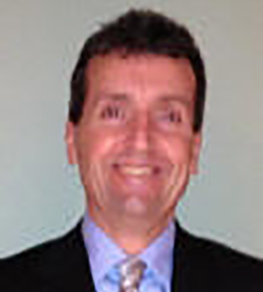
Michael J. Snee
Ohio Agreement State Program
Michael Snee is the Administrator of the Ohio Agreement State Program. In this role he is responsible for the licensing and inspection of radioactive material licensees in Ohio, including responding to incidents involving radioactive material. Mike earned a Bachelor of Science degree from Thomas Edison State College, a Master of Science in Public Administration from Central Michigan University, and earned the nationally recognized designation as a Certified Public Manager.
Mike has over 36 years of radiation protection experience, beginning with service in the US Navy aboard the nuclear-powered submarine USS James Madison. After completing his naval service Mike worked for five years in the Radiation Protection Unit at the Davis-Besse Nuclear Power Plant. He joined the Ohio staff in 1996 as a radioactive materials inspector and license reviewer.
Mike’s other responsibilities include serving as the Ohio governor’s representative on the Mid-West Interstate Low-level Radioactive Waste Compact Commission and the Midwestern Radioactive Materials Transportation Committee.
Mike formerly served as CRCPD Chairperson in 2014-2015. He currently serves on CRCPD Working Groups SR-A, SR-D, SR-J and is the Chairperson of SR-C. He also served on the Organization of Agreement States Board of Directors as Treasurer from 2008-2011.
-
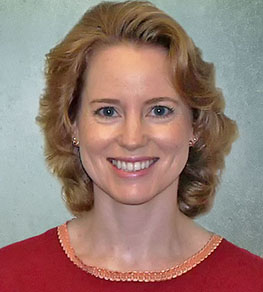
Kimberly Steves
Radiation Control Program/Kansas Department of Health and Environment
Kim is currently the Chairperson of the CRCPD Board of Directors. Kim is an engineer by training, receiving her degree from Kansas State University in 1988. She has worked in the Kansas Radiation Control Program for 30 years. She started at the Kansas program in the radiological emergency preparedness (REP), environmental, and radon programs. In 2002 she became the supervisor of those programs. In 2015 she became the Radiation Control Program Director, adding X-ray and Radioactive Materials to her responsibilities. Kim also serves as the State Liaison Officer for Kansas.
-
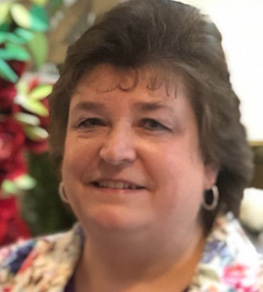
Mary Ann Spohrer
Illinois Emergency Management
Mary Ann is a member or serves as chairperson for several healing arts related committees of CRCPD and is currently serving as the Treasurer and Council Chair for the Healing Arts.
Mary Ann works for the Illinois Emergency Management Agency where she is the program manager for the Electronic Products Section. In that capacity she oversees the x-ray and laser registration and inspection programs. Illinois is a certifying state for the MQSA program and falls under the Electronic Products Section. Other program areas include the technologist accreditation, industrial radiographer certification, registration of Radiation Machine Service Providers and approval of medical physicists within the state.
Mary Ann holds a Bachelor of Science degree in Biology from Gannon University Erie, Pennsylvania. She has also earned a Master’s degree in Health Services Administration from the University of Illinois at Springfield.
-
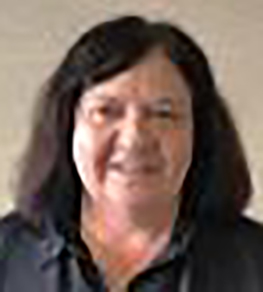
Karen Tuccillo
New Jersey Department of Environmental Protection/Bureau of Nuclear Engineering
Karen has supervised New Jersey’s Nuclear Environmental Engineering Section since 1996, overseeing a comprehensive environmental surveillance and monitoring program around New Jersey’s nuclear power plants, including the groundwater remediation of tritium. Other programs she has worked with include emergency preparedness, radon, and radiation rule revisions. She holds a Bachelor of Science Degree in Biology/Chemistry from the Pennsylvania State University and a Master of Science Degree in Radiation Science from Rutgers University.
Karen has been active in CRCPD since 1993. She currently serves on the Conference for Radiation Control Program Directors (CRCPD) Board of Directors as Council Chair for the Environmental Nuclear Council (ENC) and is Chair of the Committee on Decontamination and Decommissioning (E-24). Karen has been a member of the Health Physics Society since 1991.